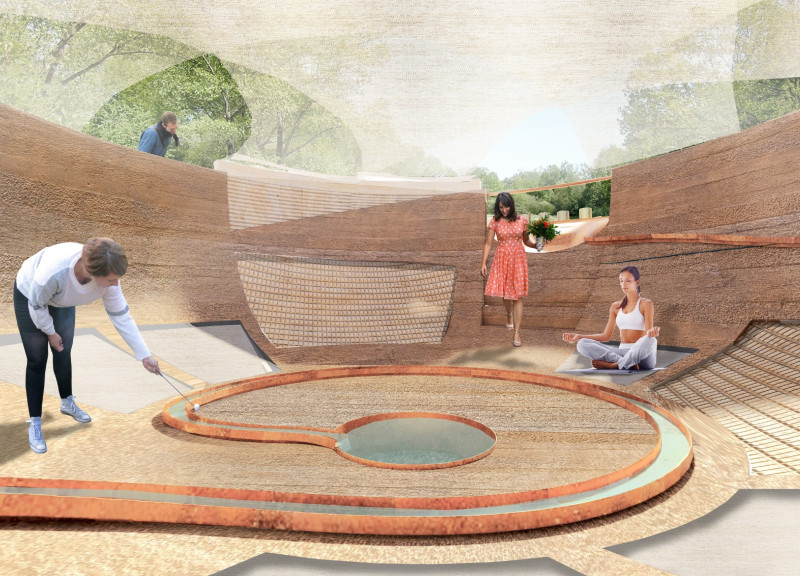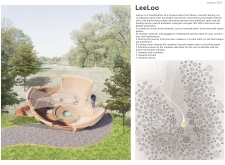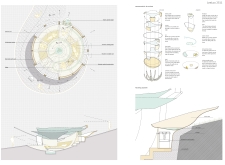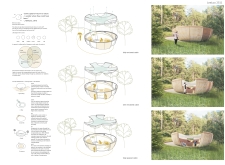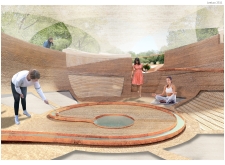5 key facts about this project
The main design features include a central cabin structure with modular elements that allow for adaptable use. This central area serves multiple functions, accommodating both individual and group activities. Additionally, the project incorporates pathways leading to key areas such as a community gathering space and a tranquil water feature. Each component of the site is purposefully arranged to support the overall theme of unity with nature.
Unique Design Approaches
One of the defining characteristics of the LeeLoo project is its commitment to sustainability. The architecture utilizes local materials, such as rammed earth for thermal mass, local wood for structural elements and furnishings, and cotton panels for shading and air circulation. These materials are chosen not only for their ecological benefits but also for their aesthetic qualities, which harmonize with the natural surroundings.
The flexible roof system is another notable feature. It allows the space to adapt to changing weather conditions. Occupants can adjust the roof to create either an open-air environment or a sheltered space, thus enhancing user experience and comfort.
Furthermore, the design incorporates sliding walls that facilitate the reconfiguration of space. This adaptability allows users to modify room layouts based on their specific needs, making the project versatile for various activities, from group meditations to private reflection sessions.
Spatial Organization and Key Features
The spatial organization in LeeLoo emphasizes a round form, symbolizing community and wholeness. The layout includes distinct zones: a meditation area, community gathering space, and nature trails. Surrounding these areas are carefully designed water features that contribute to the serene atmosphere.
The site is intentionally designed to preserve local biodiversity by including plant life that supports wildlife movement. This ecological consideration is integral to the project and enhances the overall experience for users, reinforcing the connection to the natural environment.
In summary, the LeeLoo project reflects a contemporary understanding of architecture that prioritizes sustainability while fostering community. For a comprehensive understanding of this project, including architectural plans, sections, designs, and ideas, readers are encouraged to explore the project presentation for more insights into its various elements and design outcomes.


